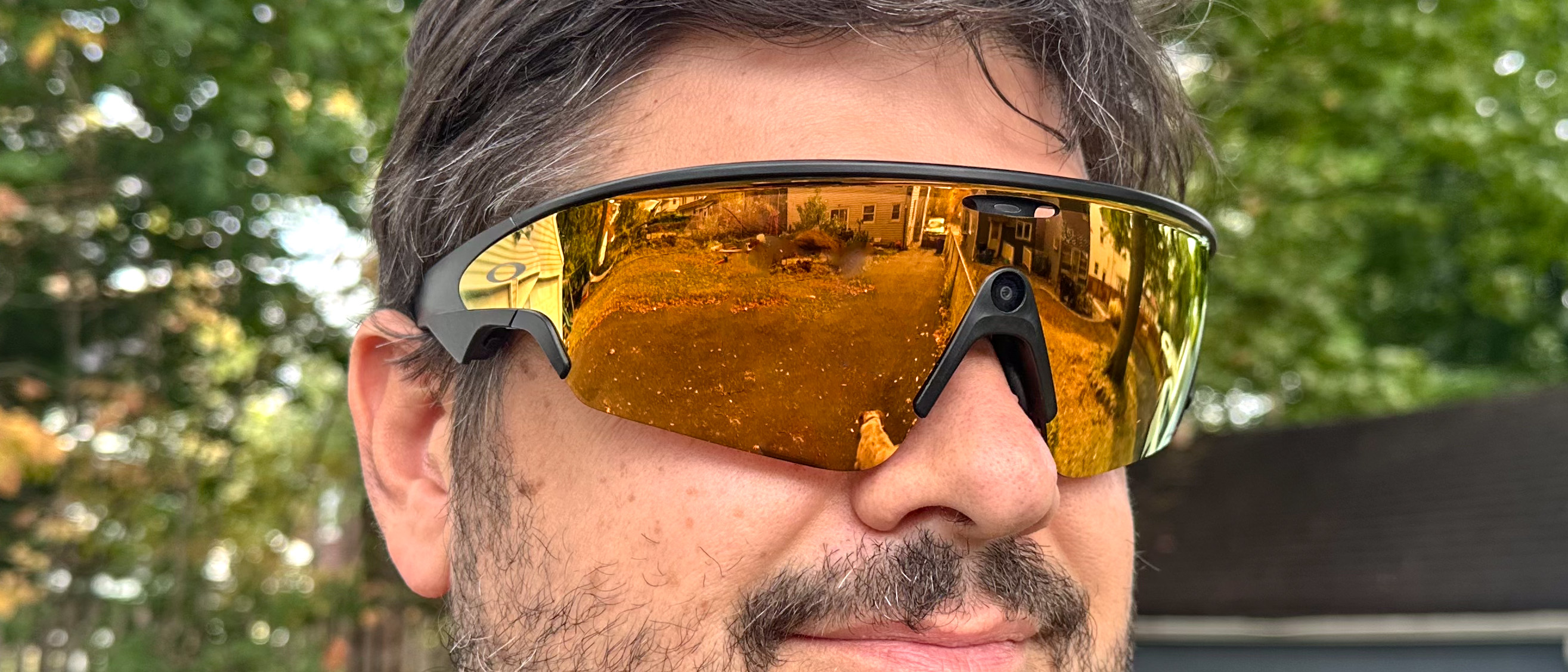Tom's Guide Verdict
The Oakley Meta Vanguard smart glasses have some neat features, like Garmin and Strava integration, capture good-quality video, and are comfortable to wear while running or doing other outdoor activities. However, those who are serious about action videography will want to go with an action camera instead.
Pros
- +
Good video and motion stabilization
- +
Great Garmin and Strava integration
- +
Comfortable to wear
- +
Long battery life
Cons
- -
More expensive than Ray-Ban Metas
- -
Bulky charging case
- -
Limited water resistance
Why you can trust Tom's Guide
I love the outdoors; it could be as simple as a short run, a hike through the woods with my dog, or a ski trip to Vermont. Regardless of the activity, I like to have my phone or action camera so I can snap photos and videos in case I see or do something cool. But when I’m in the middle of doing something, capturing those moments can be awkward if I have to reach up to press a button, or pull a phone out of my pocket.
That’s why the Oakley Meta Vanguard smart glasses are great for me — designed for those who like to record their outdoor activities, but don’t want to be encumbered by the extra weight of an action camera.
But more than that, the Vanguards have Meta AI built in, so you can ask them about strange plants or animals you might see. And, thanks to integration with Garmin and Strava, the glasses will read out your fitness stats as you’re exercising, and even make a small compilation video showing highlights from your activity.
Are these the best smart glasses for adventure junkies? Yes, considering they’re the only smart glasses for adventure junkies. I wore the Oakley Meta Vanguards for a week to see how they perform — and tl;dr, I plan to wear them a lot more.
Oakley Meta Vanguard review: Cheat sheet
- Who is it for? Those who want to record their outdoor exploits
- What does it cost? $499
- What I like: The Garmin integration and compilation videos it makes of your activities are great fun
- What I don’t like: They’re a big investment, and I have issues around Meta AI.
Oakley Meta Vanguard review: Price and availability
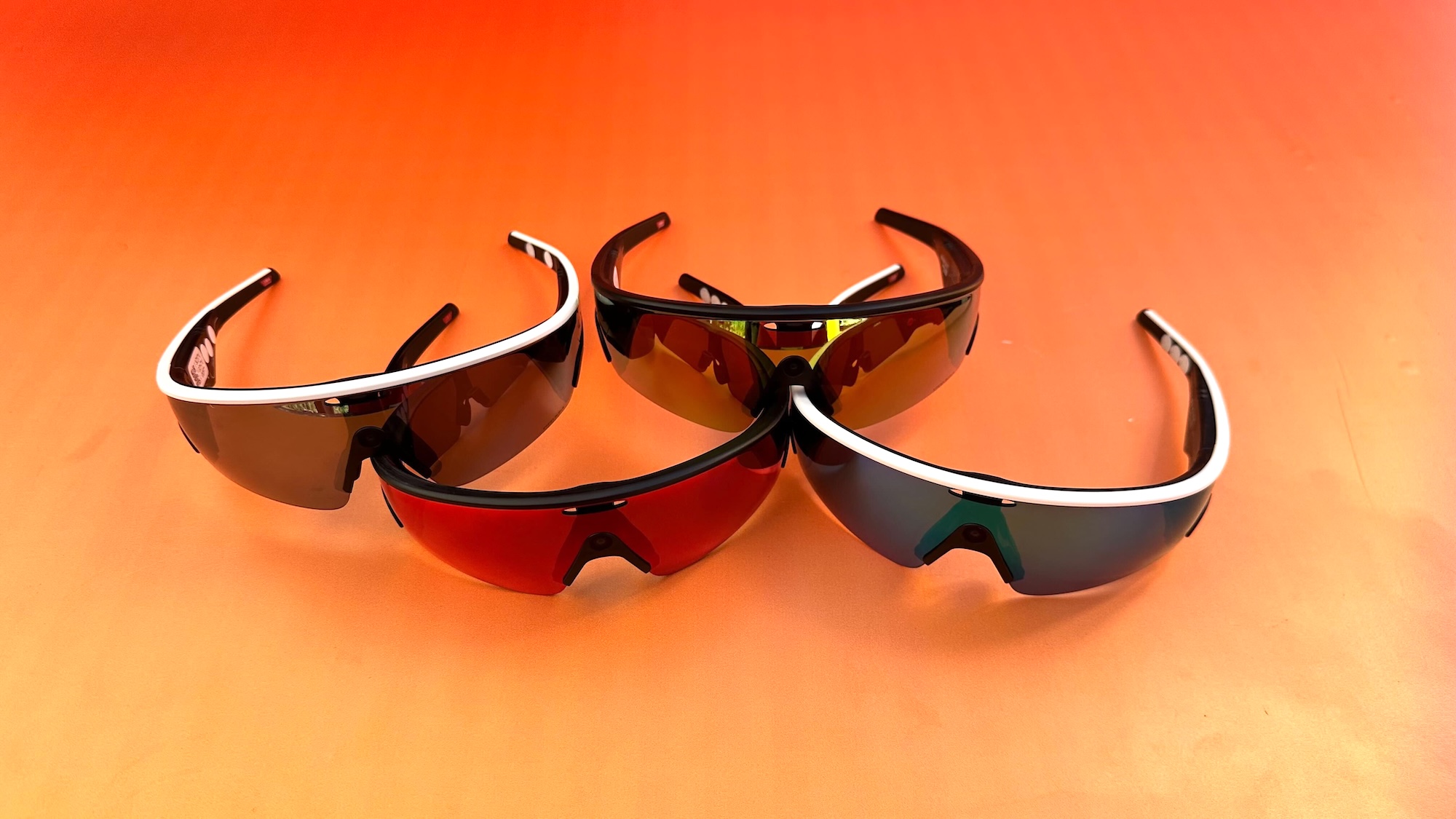
At $499, the Oakley Meta Vanguard are more expensive than the Ray-Ban Meta (which start at $379), but still $300 less than the cutting-edge Meta Ray-Ban Display. The Vanguards come in only one size, but you can choose from four frame/lens color combos: Black with Prizm 24 lenses (a gold color); white with black lenses, black with road (red); and white with sapphire.
I tested the Prizm 24 version — having seen all the models at the meta Connect event, the gold lenses make the biggest impression.
If you grow tired of a particular color lens (or happen to scratch or smash them), you can swap out the lenses for other colors. Lenses will cost $85 each.
Get instant access to breaking news, the hottest reviews, great deals and helpful tips.
Oakley Meta Vanguard review: Design and fit
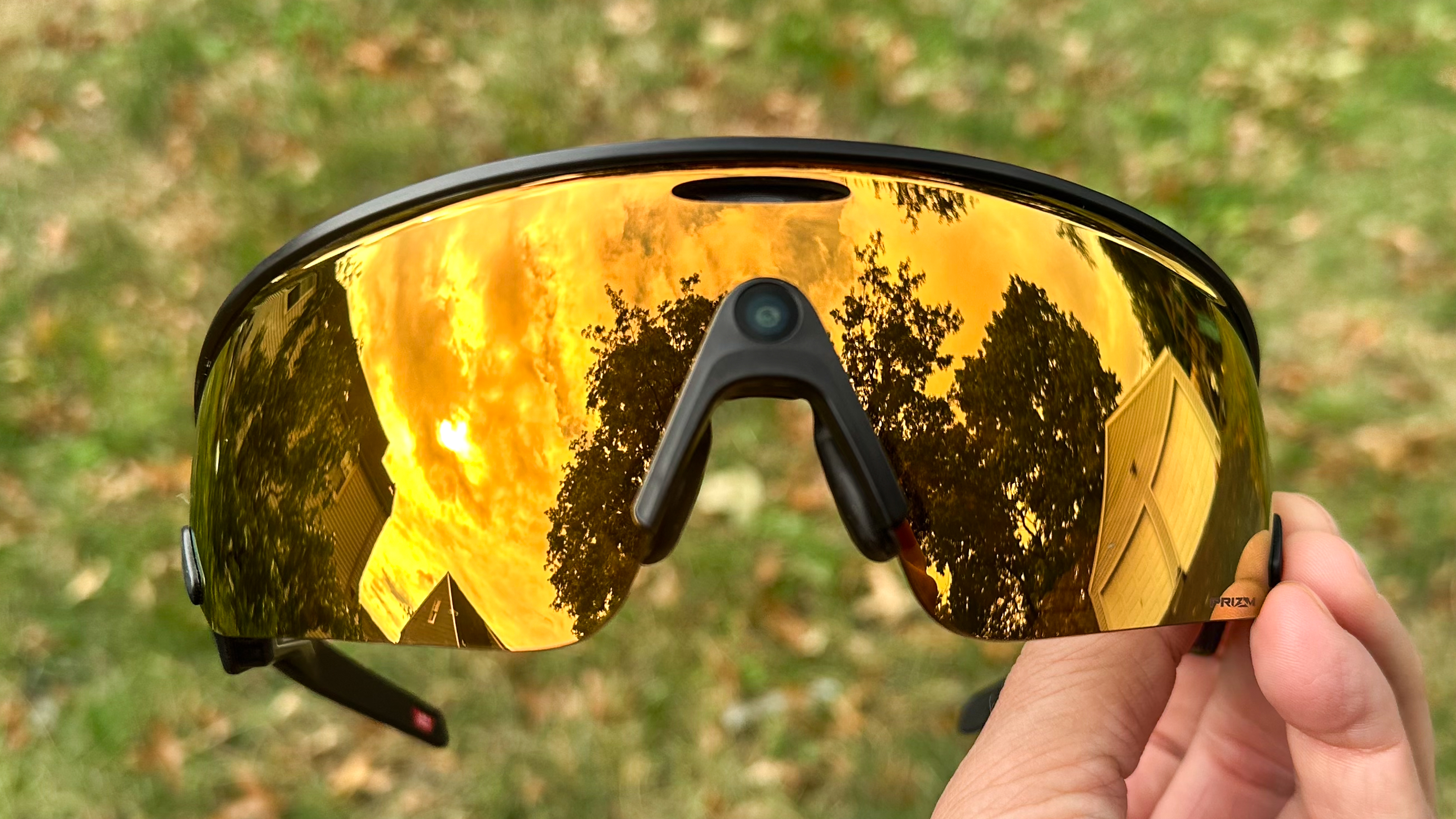
Price | $499/€549/£499 |
Weight | 66 grams |
Camera | 12MP/122º FOV |
Video | 3K/30 fps |
Battery life: | up to 9 hours |
Water resistance | IP67 |
Storage | 32GB |
Wireless | Bluetooth 5.3, Wi-Fi |
I’m going to date myself here. When I put the wrap-around Meta Vanguards on, I felt like I was the lesser-known third Bash Brother. I might not be able to bulk up like Jose Canseco or Mark McGwire circa 1989, but at least I could have sunglasses like them. Still, the look isn’t for everyone, and I felt a little weird wearing them out and about.
The wrap-around lenses do a great job at attenuating glare from all angles, though. When I was wearing them out on a bright day, I never worried about the unadulterated beams of the sun creeping around the edge of the glasses.

Just like Meta’s other smart glasses, there’s a touch-sensitive strip on the right temple of the Vanguards that you can tap or swipe to change the volume of music or play and pause what you’re listening to. I like that on the Vanguards, this area abuts the lenses themselves, so I have a tactile cue as to where to place my finger. The Ray-Ban Metas don’t have this, so more than once, I’ve jabbed my finger around trying to pause my tunes.
Also on the bottom of the right temple are two buttons; the first is for taking photos and video, and the second is a customizable action button. Currently, you can choose from six options: summon Meta AI, use it as a secondary capture button, send a message to a contact, listen to music, get real-time workout stats, or make calls with Be My Eyes.
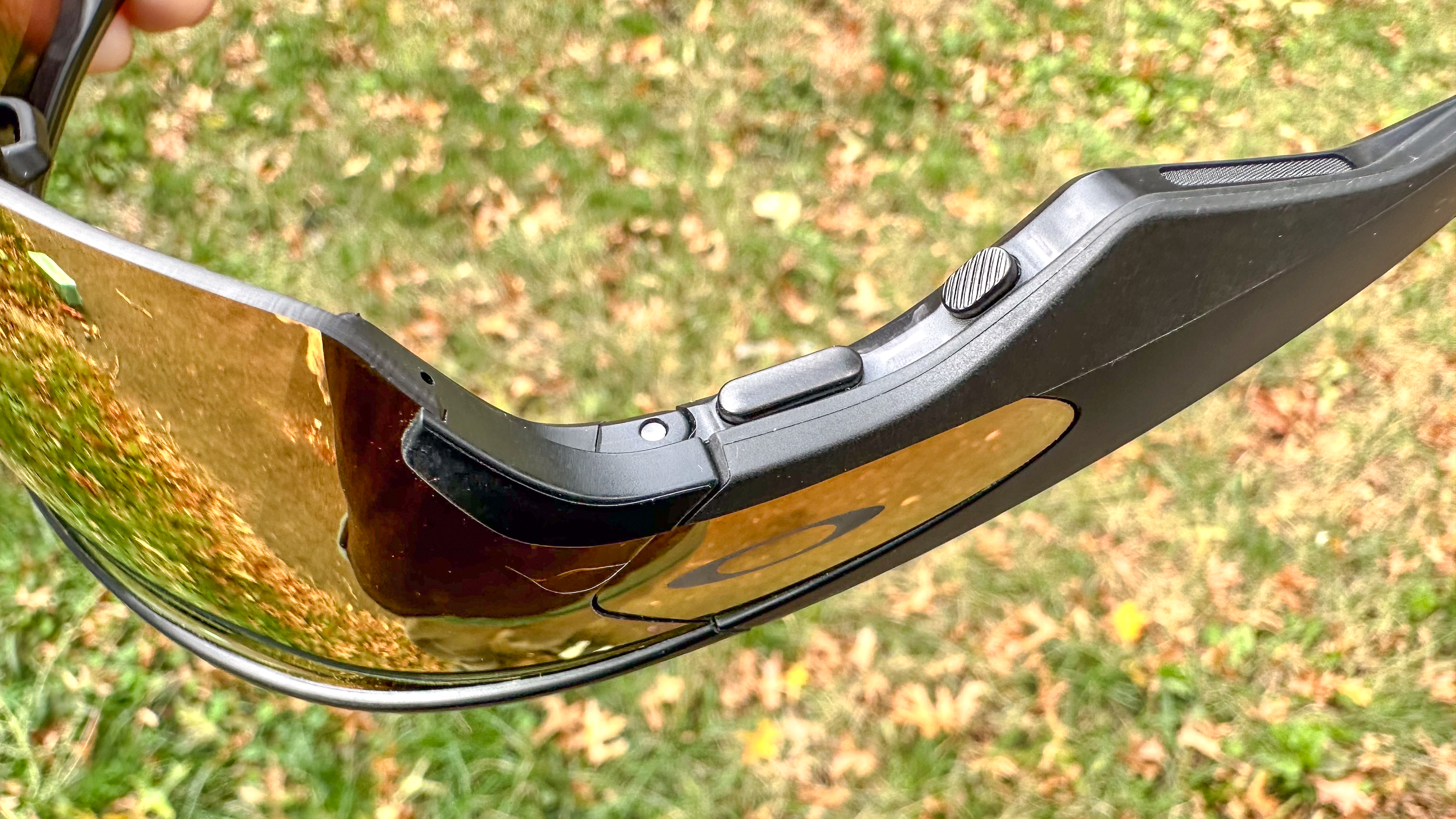
Meta says the Vanguards have an IP67 rating against water, meaning that they’re protected against sweat and the occasional splash or two. However, the company advises against using them for more serious watersports, like kiteboarding or surfing.
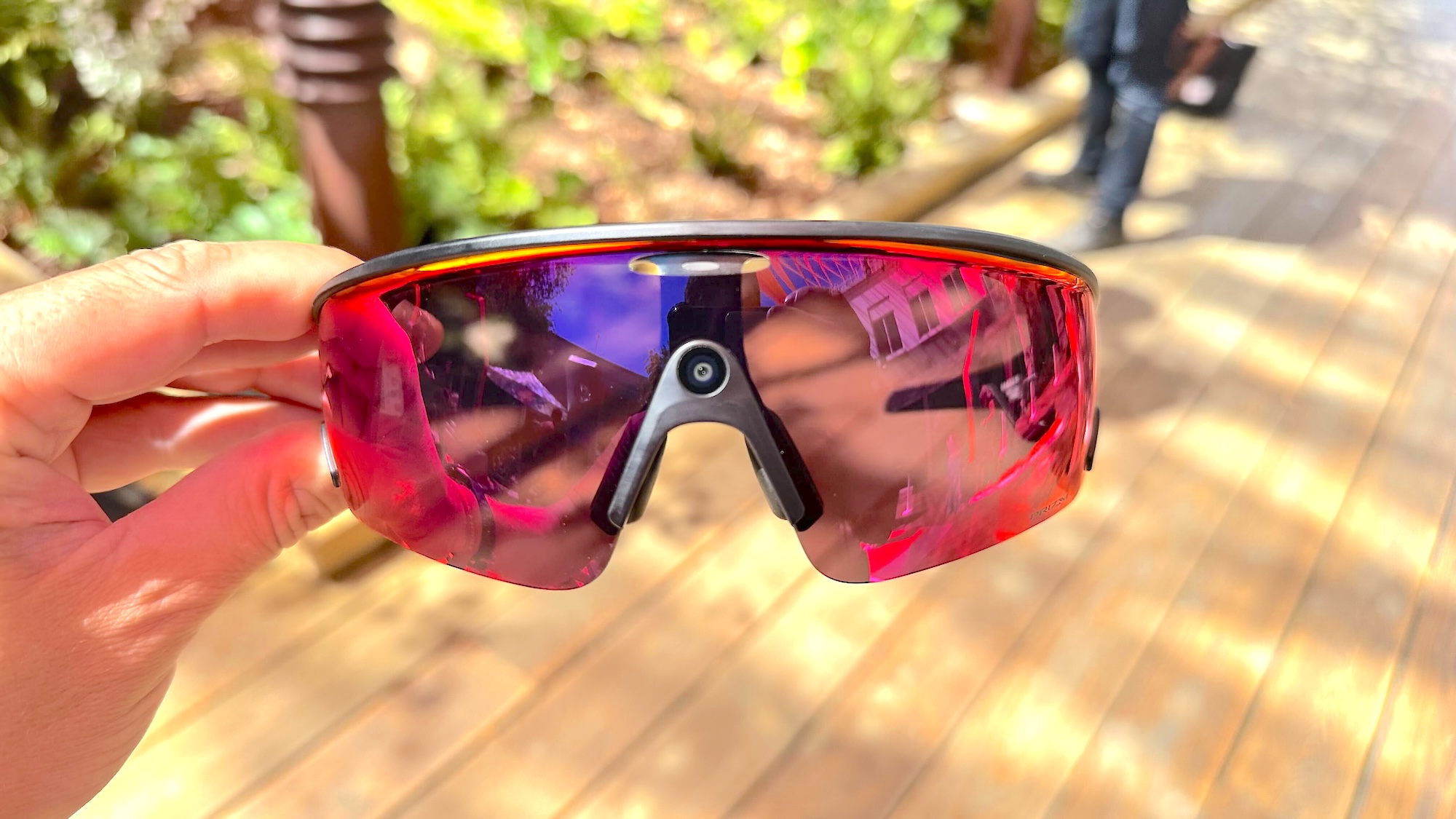
Oakley Meta Vanguard review: Video quality and motion stabilization
While the Vanguards can capture video at the sale resolution as the Ray-Ban Metas (3K), the Vanguards have a wider field of view (122º), so you’ll be able to capture more of the action as you’re outside doing your thing. It should be noted that video is still vertically oriented, 3K recordings have an aspect ratio of 2192 x 2928 pixels, for example.
Video quality was generally great — for a pair of glasses. Colors, such as the blue of the sky or the red of a fire hydrant, were well saturated, and the Vanguards did a good job at balancing light and dark areas, though it did blow out a few clouds and lighter-colored houses in my shots.
The Vanguards have several levels of motion stabilization, but your choices are limited depending on the resolution of the video you select. For instance, if you want to shoot in 3K or 1080p at 60 fps, you can only choose the medium motion stabilization setting — which isn’t all that effective.
To test its motion stabilization, I ran across a field a few times with my dog, changing the settings on the Vanguard’s camera each time. At 1080p and 30 fps, the difference between low and max motion stabilization wasn’t huge, but it was noticeable. Below are clips showing medium and max stabilization.
While the Vanguards deliver quality video and motion stabilization, they fall well short of what you can get with the best action cams from GoPro and others, which boast higher resolution, longer recording times, and a host of other features. An unfair comparison? Perhaps, but it’s good to set expectations.
Sadly, the Vanguards don’t support livestreaming, so you can’t show off to your friends around the world in real time. Considering this is a feature available on the first-gen Ray-Ban Meta glasses, I hope it gets added here soon, too.
Oakley Meta Vanguard review: Garmin integration
Another feature that sets the Vanguards apart from Meta’s other specs is that they can connect directly to certain Garmin smartwatches and fitness trackers, and deliver real-time updates as you’re working out.
So, if you’re on a run, you can ask Meta AI about your heart rate or pace, and it will tell you your stats, as measured by your Garmin watch. And, during your workout the Oakleys will record video and take photos automatically at set intervals.
However, in order to use this feature, you also have to bring your phone with you, as it serves as the bridge between your Garmin watch and the glasses. It's a bit clunky if like me, you're used to running with just your watch.
I took the Vanguards for a few workouts along with my Garmin Forerunner 570, and at each mile, the specs would tell me my pace. If I said “Hey Meta, how am I doing?” It would give me a fuller readout of my pace, heart rate, and elapsed distance. And, if I asked specifically about my heart rate, it would not only tell me my stats, but if my heart rate was typical for the workout I was doing.
Another cool feature is that the Vanguards will automatically start capturing short videos (about a few seconds each) and photos during your activity, and then splice them together. Meta says it takes these at significant moments, but it seemed kinda random during my testing.
Even better: You can add an overlay of your stats on top of the video. I can’t wait to try this when I’m in an actual race, as it’ll be fun to have a full
To use this feature, you have to install the Meta AI app on your Garmin watch, and then specify which activities you’d like to track. If you want to remove autotracking, you’ll then have to go into each activity to remove Meta AI as a data field.
pretty handy, and beats having to look down at your watch, but I would love for a future update to allow for custom notifications.
Oakley Meta Vanguard review: Audio
Like Meta’s other smart glasses, the Vanguards have two open-ear speakers in the temples, but here, they’re designed for a more active lifestyle, as they’re 6dB louder than the Oakley Meta HSTN, and can still be heard at speeds of up to 30 MPH.
To test this, I wore the Vanguards on an electric scooter ride around town. As my speed increased, so too did the volume of the Vanguards’ speakers. At 30 MPH, I could still hear the strains of the Allman Brothers’ “Jessica” in my ears, but tones were overly harsh in competing with wind noise.
Overall, audio was good for open-ear speakers. You’re naturally not going to get that deep-thumping bass you’d get from a pair of the best wireless earbuds, but they’re quality enough that when I cranked Vangelis’ “Chariots of Fire” on my run, I started pumping my legs a little bit harder. However, the snares on Bruce Springsteen’s “Dancing in the Dark” sounded a bit scratchy
Oakley Meta Vanguard review: Battery life
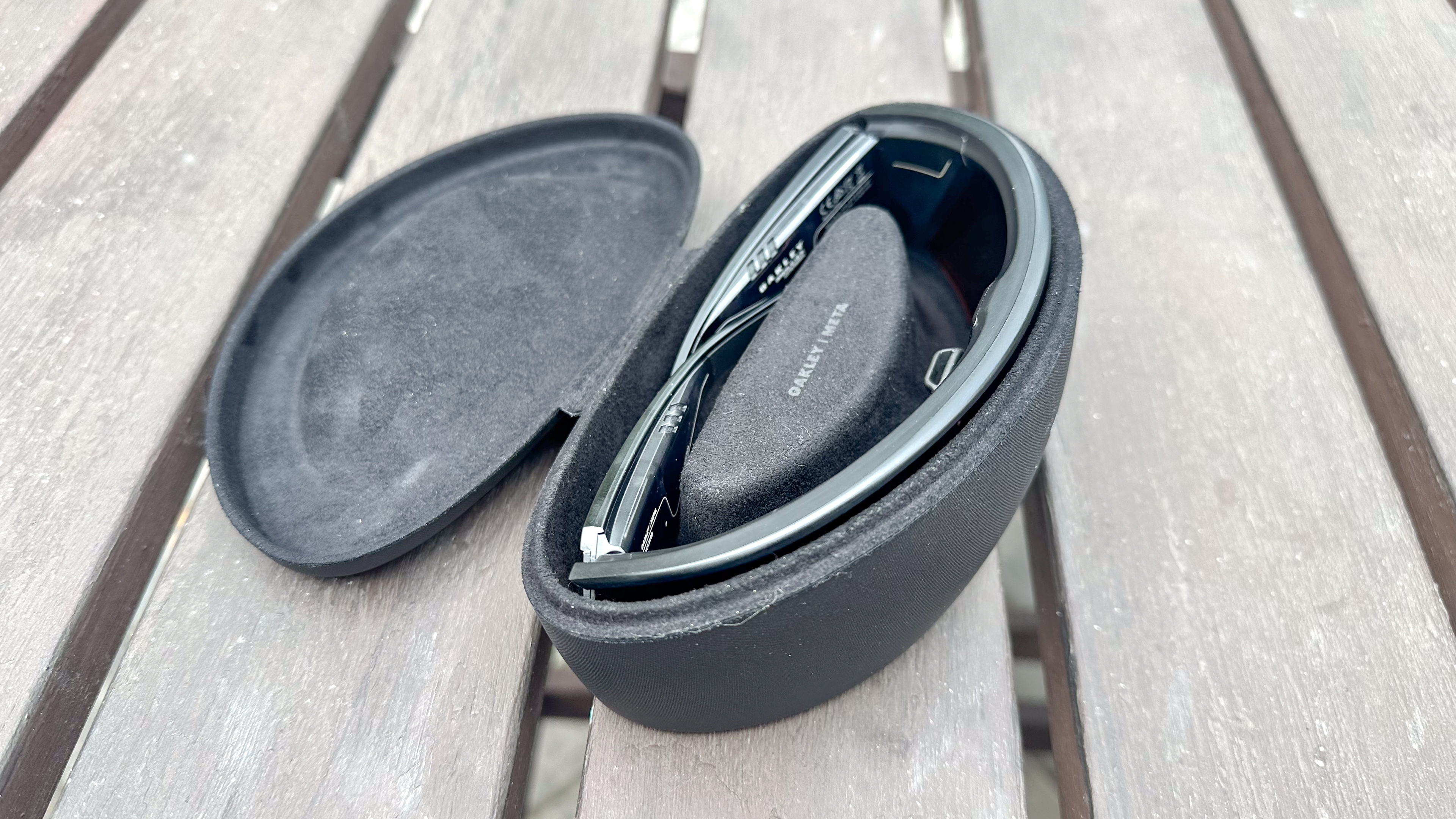
Meta says the Vanguards will last up to nine hours on a charge, and up to 36 hours with a fully charged case. I haven’t put the glasses through a very rigorous test, in part because I haven’t spent nine hours wearing them outdoors. But in between my shooting video, going for runs, and listening to music, I’ve rarely had to worry about their battery life.
I will be interested to see how they fare in the colder months; I happen to love skiing, but the arctic conditions in the Northeast are brutal not just on your extremities, but electronics, too. Often, I have to tuck my GoPro’s battery inside my jacket to bring the camera back to life — will the Vanguards fare any better?
The Vanguards come in a hard-shell case that also serves to recharge the glasses. It’s a bit bulky, but considering the glasses themselves don’t fold down all that compactly, they are a necessary evil.
Oakley Meta Vanguard review: Verdict

The Vanguards are not the first pair of “smart” sunglasses from Oakley; anyone remember the Oakley Radar Pace? There have also been attempts at adding action cameras to glasses. I myself tested a pair more than a decade ago. However, the Oakley Meta Vanguards stand on the shoulders of those earlier attempts, but add a good deal more, thanks to their integration with Meta AI, as well as Garmin and Strava.
Speaking of Meta AI; I haven’t really touched on it here (you’ll want to check out my Meta Ray-Ban review for a deeper dive), but given the Vanguard’s more sports-forward emphasis, I feel those who buy these specs will use its AI far less than its other features. And, given Meta’s plans to serve you ads based on how you use its AI, I’m far less inclined to use it in general.
I really dig the Garmin integration, especially how the glasses will create a highlight reel of your activities; I can’t wait to try using this feature the next time I’m in a half marathon.
When it comes to video, the Vanguards are better suited for those who are more casual about filming their outdoor activities — if the idea of spending $500 fits your idea of casual. Having used GoPros for years, I would definitely opt for a standalone action camera if I wanted to capture a wide, breathtaking vista. However, if your aim is getting some fun shots of you and your friends zipping down a mountain, then the Vanguards’ quality will more than suffice.
I plan to do a lot more road testing of the Vanguards to see how they hold up, but I like what they can do so far.
More from Tom's Guide
- Meta Hypernova smart glasses: Rumors, leaks and everything we know
- I just tried Ray-Ban Meta's latest AI updates
- Oakley Meta HSTN smart glasses review: What I love (and what's .missing)

Michael A. Prospero is the U.S. Editor-in-Chief for Tom’s Guide. He oversees all evergreen content and oversees the Homes, Smart Home, and Fitness/Wearables categories for the site. In his spare time, he also tests out the latest drones, electric scooters, and smart home gadgets, such as video doorbells. Before his tenure at Tom's Guide, he was the Reviews Editor for Laptop Magazine, a reporter at Fast Company, the Times of Trenton, and, many eons back, an intern at George magazine. He received his undergraduate degree from Boston College, where he worked on the campus newspaper The Heights, and then attended the Columbia University school of Journalism. When he’s not testing out the latest running watch, electric scooter, or skiing or training for a marathon, he’s probably using the latest sous vide machine, smoker, or pizza oven, to the delight — or chagrin — of his family.
You must confirm your public display name before commenting
Please logout and then login again, you will then be prompted to enter your display name.
